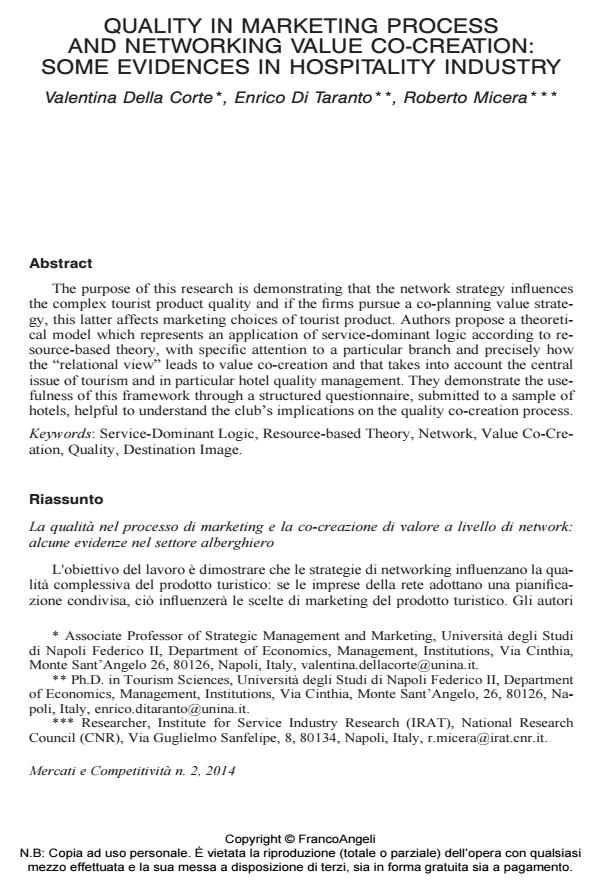Quality in marketing process and networking value co-creation: some evidences in hospitality industry
Journal title MERCATI E COMPETITIVITÀ
Author/s Valentina Della Corte, Enrico Di Taranto, Roberto Micera
Publishing Year 2014 Issue 2014/2
Language English Pages 28 P. 53-80 File size 237 KB
DOI 10.3280/MC2014-002004
DOI is like a bar code for intellectual property: to have more infomation
click here
Below, you can see the article first page
If you want to buy this article in PDF format, you can do it, following the instructions to buy download credits

FrancoAngeli is member of Publishers International Linking Association, Inc (PILA), a not-for-profit association which run the CrossRef service enabling links to and from online scholarly content.
The purpose of this research is demonstrating that the network strategy influences the complex tourist product quality and if the firms pursue a co-planning value strategy, this latter affects marketing choices of tourist product. Authors propose a theoretical model which represents an application of service-dominant logic according to resource- based theory, with specific attention to a particular branch and precisely how the "relational view" leads to value co-creation and that takes into account the central issue of tourism and in particular hotel quality management. They demonstrate the usefulness of this framework through a structured questionnaire, submitted to a sample of hotels, helpful to understand the club’s implications on the quality co-creation process.
Keywords: Service-Dominant Logic, Resource-based Theory, Network, Value Co-Creation, Quality, Destination Image.
Valentina Della Corte, Enrico Di Taranto, Roberto Micera, Quality in marketing process and networking value co-creation: some evidences in hospitality industry in "MERCATI E COMPETITIVITÀ" 2/2014, pp 53-80, DOI: 10.3280/MC2014-002004